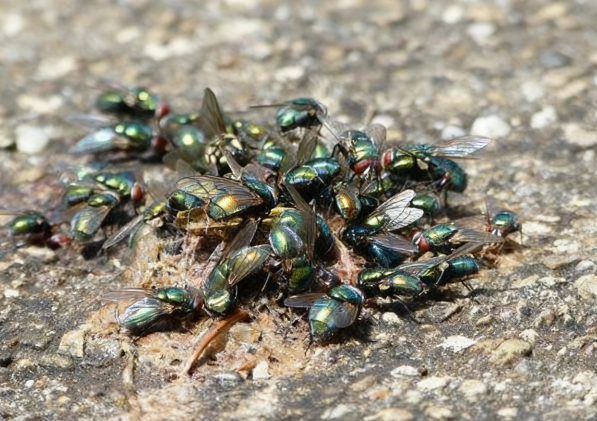The harm of flies and their prevention and control methods
1.The harm of flies
Flies living in the environment around people, especially houseflies that like to enter people's homes, often harass people and make them restless, affecting their work and rest. The existence of flies is not only an unhygienic manifestation, but also has a negative impact on people's psychology and can spread a variety of diseases.

The "eating and pulling" characteristics of flies determine that the way to spread diseases is mainly through mechanical carrying, and the transmission of pathogens to humans can be divided into two aspects: external carrying and internal carrying, with the internal carrying method being more important. The main mechanism is that flies like to breed in animal corpses or excrement. Their infection may be caused by eating these substances, and mechanical transmission is caused by their vomiting or contaminating food during feeding. There are about 30 kinds of viruses, more than 100 kinds of bacteria, more than 10 kinds of rickettsia, about 30 kinds of protozoa, and they can also carry a variety of worm eggs.
2. Biologically transmitted diseases:
(1) Trypanosomiasis: Also known as sleeping sickness, it is a disease transmitted by tsetse flies (genus Glossina) that appear in tropical Africa when they suck blood. When it bites a patient with African trypanosomiasis, the trypanosomes travel with the blood to the stomach of the tsetse fly, where they reproduce and develop, and then migrate to the salivary glands to develop into infectious trypanosomes, which are then transmitted to normal people by the tsetse fly biting them. When an epidemic occurs, trypanosomes can be directly transmitted from person to person through the mouthparts of tsetse flies or other blood-sucking flies that contaminate the flies, without developing in the flies. Patients usually die if they are not treated.
(2) Eye sucking nematodes: An eye disease caused by the conjunctival sucking nematodes and California sucking nematodes parasitizing the conjunctival sac and tear ducts of the human eye. The larvae of the worm develop into infectious larvae in certain flies and then reach the fly's mouthparts. When the fly licks the human eye, it invades the human eye and causes infection.
(3) Myiasis: A disease caused by fly larvae (maggots) parasitizing the tissues, organs, cavities, etc. of humans and animals. The main symptoms are manifested in the mechanical stimulation of the host or patient by the maggots. The hairs, hooks, stings, migrations, etc. on the surface of the maggots will stimulate the host's body wall. The patient will feel a tingling, pain, itching, foreign body sensation, migration sensation, etc. in a certain part of the body.
4. Stinging, sucking blood and harassment: Adult stable flies can suck the blood of livestock and can also sting and suck blood. The African yellow dust fly (also known as the firefly), the female fly lays eggs in the dry soil in the cracks of the floor of the human residence, and the larvae hatch in 2-3 days. The larvae hide in the soil or dust during the day and crawl onto sleeping people at night to suck blood.
Ways to prevent flies from spreading diseases:
1. Cover the trash can, seal the trash room, and use packaging to dispose of domestic garbage. Dispose of it every day. Do not stay in one place for a long time to reduce the food source of flies. Clean the trash can regularly.
2. Rotten fruits (especially bananas) are easy to breed flies. Enterprises and families need to pay attention to storage and regular inspection, replacement and disposal.
3. Flies like chicken, duck, fish viscera, and rotten bean dregs. Catering companies, related food production companies and farmers' markets need to pay attention to the timely disposal of such garbage.
4. Animal and human excrement has always been the basis for the survival of flies. Screen windows and screen doors can be installed to prevent flies from invading the room.
5. According to the habit of houseflies to move towards light, insect traps can be installed indoors, and fly tapes and fly boards can be placed in some corners.
6. Chemical control. Space spraying is a fast way to kill flies. Manual or motorized sprayers can be used.
Recommended products include: beta-cypermethrin 2% + d-tetramethrin 0.5%, propoxur 8% + transfluthrin 2% ME, permethrin 0.25% + rich-d-transallethrin 0.35%
Other information

